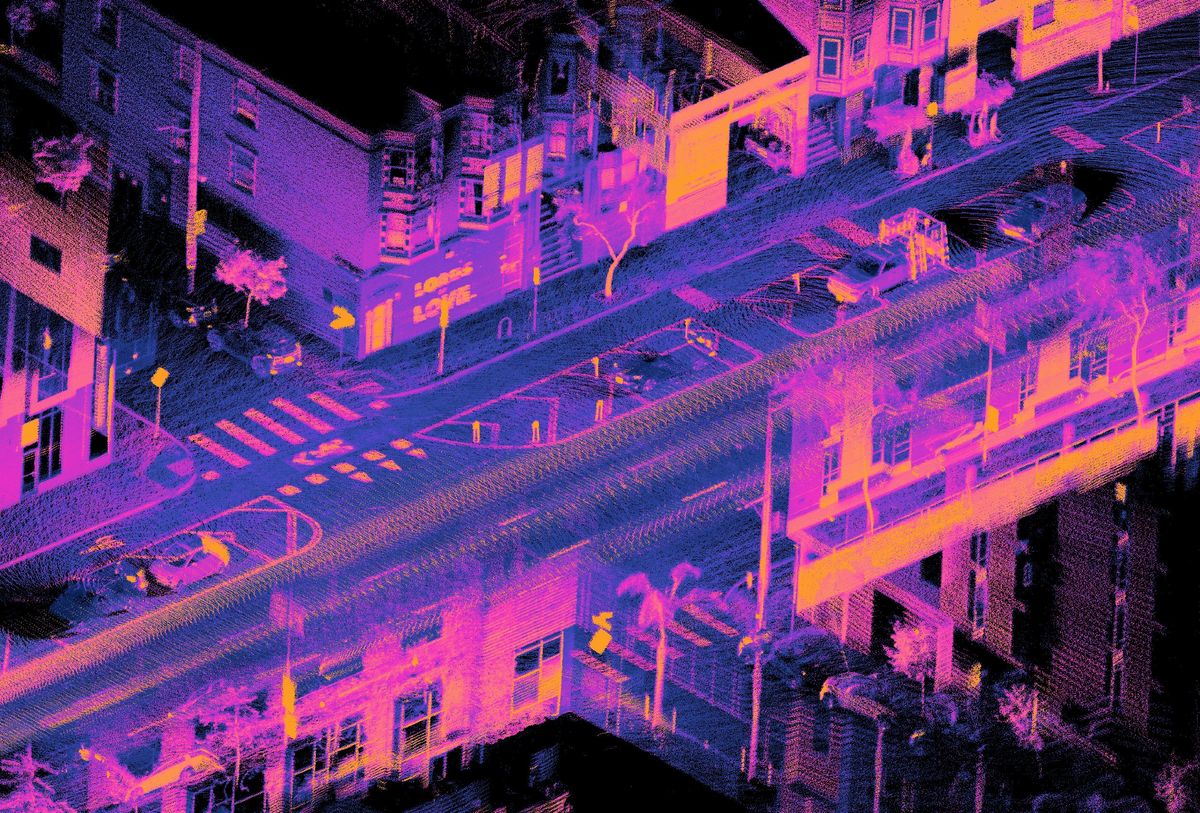This article is part of our exclusive IEEE Journal Watch series in partnership with IEEE Xplore.
Thanks to its ability to depict environments with detailed precision, lidar has been used for everything from mapping out civilizations that have been long buried underground to ensuring safe autonomous driving.
Lidar involves pointing a laser at an object and measuring the time for the reflected light to return to the receiver. While the technology is incredibly useful, techniques to interpret returning light signals can be complicated. In a recent study, a team of researchers based in New Jersey propose a technique that could help substantially simplify lidar signal processing, reducing the need for complicated data crunching and machine learning to decipher the signals. They describe the approach in a paper published 18 September in IEEE Photonics Technology Letters.
As laser light travels to its target and returns, there are three different opportunities to make the signals clearer and reduce background noise of other light signals picked up by the lidar sensor. First, scientists can incorporate intense data-crunching techniques to sift through the signals and remove the background signals. But this requires a lot of computing power. Alternatively, unique patterns can be encoded in the light signals, but again, this takes computing power to decipher. These techniques to denoise data also cause a delay between data collection and data interpretation.
James Garofolo, a Masters student from Ben Wu’s research group in the electrical and computer engineering department of Rowan University, in Glassboro, N.J., was involved in the recent study. His team’s solution targets the physical level of the laser signal.
Applying blind source separation (BSS) to lidar
Essentially, light’s brightness decays as it propagates through space, and is especially darkened as it enters into a lens at a sharp angle. In Garofolo’s approach, two lidar signals are received from two different angles by two different receivers.
“Once these combinations are received, we can scale them such that the interference is the same amplitude in both channels and then subtract them from one another to almost completely remove the interference while still [picking up] the signal of interest,” explains Garofolo.
This approach, called blind source separation (BSS), is used in many different technologies. In their study, Garofolo and his colleagues demonstrate how effective it can be when applied to lidar.
They conducted experiments studying this BSS approach under a number of scenarios with different mixes, signal amplitudes, and interference signal shapes. The results show that the technique can successfully eliminate 40 decibels of noise, although Garofolo notes that 30 dB was more typically observed in the tests. As well, the BSS approach could recover signals that would have otherwise rendered the lidar data unusable.
Garofolo says that while his team is interested in expanding upon this technology, they are also interested in applying BSS techniques in other technologies, for example to improve machine vision and autonomous driving systems. “Blind-source separation has been a theme in our lab for a while, and the possibilities for the technology never cease to amaze,” he says.
- Lidar-on-a-Chip: Scan Quickly, Scan Cheap ›
- Tiny, Solid-State Lidar Raises Stakes in the Megapixel Race ›
- Lidar on a Chip Puts Self-Driving Cars in the Fast Lane ›
Michelle Hampson is a freelance writer based in Halifax. She frequently contributes to Spectrum's Journal Watch coverage, which highlights newsworthy studies published in IEEE journals.


